As digital adoption accelerates across the maritime and logistics sectors, SaaS companies are finding that the right leadership talent is now a primary driver of valuation. Investors are pushing for growth efficiency, faster time to market, and resilience in uncertain macroeconomic conditions.
Our conversations with founders, boards, and investors, combined with proprietary hiring data, reveal four key leadership hiring trends shaping the market in 2025.
Trend 1 – Surge in Demand for Product-Led Growth Leaders
- Up 45% YoY demand for executives with proven track records in Product-Led Growth (PLG), particularly in Series B–D funded SaaS companies.
- Investors want leaders who can scale user adoption without disproportionate increases in customer acquisition cost (CAC).
- PLG leaders are being sought not only in pure-play SaaS but also in hybrid product-service models where maritime operators are integrating digital solutions into operational workflows.
- These executives often combine deep product vision, data-driven decision making, and the ability to mobilise cross-functional teams to improve Net Revenue Retention (NRR).
Investment implication:
In competitive capital environments, hiring a PLG-focused CRO, CPO, or CEO can significantly compress the payback period on growth investments. PE and VC firms are increasingly prioritising such hires pre-deal or immediately post-close to accelerate value creation.[/vc_column_text]
Trend 2 – Shorter Hiring Cycles, Higher Stakes
- Average time-to-hire for C-level roles: 72 days in 2025 (down from 88 days in 2023).
- The acceleration is driven by heightened competition for scarce talent and the risk of opportunity cost when critical roles remain vacant.
- Boards are streamlining interview processes, leveraging pre-vetted talent pools, and adopting data-backed candidate assessments to avoid delays.
- However, faster decision-making increases the risk of “mis-hire” if due diligence on cultural fit and operational track record is compressed.
Investment implication:
Speed is now a competitive advantage in leadership acquisition, but investors must balance urgency with rigour. Access to a trusted, pre-qualified network through specialist headhunters can mitigate mis-hire risk while maintaining deal momentum.
Trend 3 – Remote-First Leadership as a Strategic Lever
- 30% of leadership hires in 2025 are fully remote, a significant shift for a historically location-bound industry.
- Remote-first strategies are enabling SaaS companies to access niche leadership skills (AI, machine learning, IoT integration, cybersecurity) that are scarce in maritime hubs.
- Many of these remote executives come from adjacent industries (aviation, automotive, fintech), bringing fresh perspectives and innovation capability.
- This model also supports cost flexibility, allowing companies to align executive compensation with value delivered rather than local cost-of-living benchmarks.
Investment implication:
Embracing remote-first leadership expands the total addressable talent pool by up to 5x. For portfolio companies, this can mean faster scaling into new markets and more diverse thinking at board level—critical for innovation and competitive advantage.
Trend 4 – Remote-First Leadership as a Strategic Lever
- Women hold less than 20% of C-level positions in maritime/logistics SaaS.
- This is despite mounting evidence that gender-diverse executive teams deliver:
- +25% ROI over industry averages (McKinsey, 2023)
- Higher innovation output and improved decision-making resilience
- Diversity initiatives in the sector remain underfunded or bolt-on, rather than embedded in leadership succession planning.
- The gap is most pronounced in technical and commercial leadership roles, where pipelines are thin due to limited early-career representation.
Investment implication:
For investors, overlooking diversity is a missed opportunity for value creation. PE and VC funds that actively drive diversity in portfolio company leadership teams not only tap into proven performance gains but also strengthen brand equity with customers and employees.
Investor Takeaway:
The 2025 leadership landscape in Maritime & Logistics SaaS is defined by speed, flexibility, and diversity.
- Speed: Rapid, decisive hiring can secure top talent before competitors.
- Flexibility: Remote-first leadership unlocks rare skills and accelerates market expansion.
- Diversity: Balanced leadership teams outperform on innovation, resilience, and ROI.
In high-growth and transformation scenarios, leadership selection is no longer an HR function, it’s a core value creation lever.
The investors who treat it as such will capture outsized returns in the years ahead.
[/vc_column][/vc_row]
Do you need recruitment support?
Contact us today to optimise your recruitment strategy!






